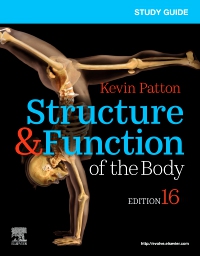

Immigrants were left on their own once entering America. The children of the immigrants normally grew up "American" and become wholly "American." To keep the old, Catholics set up school systems, their were foreign language newspapers, ethnic restaurants, theaters and social clubs. Immigrants struggled between keeping Old World customs and adopting the New World. Many young men (about 25% of the immigrants) came to America not to live, but to work and then return to Europe. They were unusual in that they'd come from cities of Europe and brought their city-life skills. Trans-Atlantic steamships also made passage easier.Īmerican businesses loved the immigration boom. The New Immigrants came to America for many reasons: the population in Europe had grown very fast, there had been wars, there was discrimination, but the main reason for emigrating to America, as usual, was economic opportunities. Places popped up like "Little Italy" and "Little Poland." Americans felt these newcomers could not or would not melt into the American way of life. They generally came to areas consisting of their home-country neighbors. In 1880 they made up 19% of immigrants 1910 they were up to 66% of immigrants. They were usually Catholic, uneducated, and were generally penniless. They largely came from nations with little democratic traditions. They came from southern and eastern Europe-Poland, Italy, Slovakia, Croatia. They were generally better educated and with a bit of money behind them.Īround 1880, things changed over to " New Immigration." They were Protestant (except for the Irish and a few Germans). They largely came from nations with some democratic backgrounds and were of the fair-skinned Anglo-Saxon type. They came from northern and western Europe-Britain, Ireland, Germany, Scandinavia. Immigration was speeding up and it was changing.īefore 1880, most immigrants to America were from " Old Immigration." That is to say, more people lived in cities (of 2,500 people or more) than in the country. The slums would then be re-inhabited by the next wave of immigrants.Ī notable statistic occurred in 1920: for the first time, America was more urban than rural. People usually moved up and out of the slums. It wasn't perfect, but was much healthier than a cubicle box shaped apartment with no air shaft. The dumbbell apartment had an air shaft vertically down the through the building to let in air. Getting clean air into the tenement apartments was a problem. Those two conditions simply added to one another literally making the slums death-traps.Īn early godsend was the " dumbbell" apartment. They were far too over-populated and far to unsanitary. The result was unhealthy and unclean conditions in the streets. Trash piled up in the streets, drinking water was poor, sewage systems were ineffective, air quality was terrible, animal droppings were everywhere.

The rapid growth of cities had negative effects as well, mainly in sanitation. Companies like Sears and Montgomery Ward sent catalogs yearly and people could buy anything in the catalog and have it sent to their rural homes. There was another way for country folks to gain a bit of the big city-via mail order catalogs. Notably, Dreiser was a "realist" writer-Carrie's life and Chicago are written about plainly, without "sugar coating", and rather depressingly. She finds upward mobility by sleeping with men she thinks are her ticket up the social ladder. In a nutshell, it's about the struggles of a young woman who wants to leave boring country life for the hustle-bustle of Chicago. The suspension bridge came to symbolize American ingenuity, technology, commerce, and can-do attitude.Īuthor Theodore Dreiser captured big-city life (for both good and bad) in his novel Sister Carrie. New York's Brooklyn Bridge was completed in 1883. There were department stores like Marshall Field's in Chicago and Macy's in New York. He used steel, concrete, newly invented elevators, and the motto "form follows function." A bit ahead of his time, his techniques would later influence Frank Lloyd Wright and become accepted.Ĭities attracted people from the farms partly due to jobs, partly to the excitement of the city, partly due to advances.Ĭities had city lights, indoor plumbing, telephones, and skyscrapers. Working in Chicago in the 1880's, architect Louis Sullivan was the father of the skyscraper. People now rode trolleys.Ĭities grew upward thanks to skyscrapers. The old "walking city" of Europe had expanded to become larger than was practical to walk across. Cities grew outward, but also upward.Ĭities grew outward thanks to the electric trolley.


 0 kommentar(er)
0 kommentar(er)
